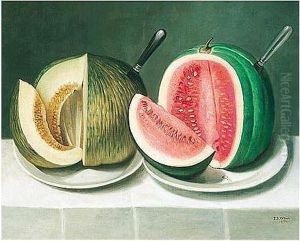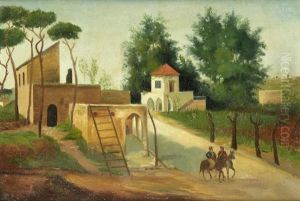Daoud Corm Paintings
Daoud Corm was a pioneering figure in the world of art in the Middle East, particularly within the realm of Lebanese art during the late 19th and early 20th centuries. Born in 1852 in Beirut, which was then part of the Ottoman Empire, Corm grew up in an era of significant cultural and political transformation. These changes, along with his Christian Maronite background, played a crucial role in shaping his perspectives and artistic endeavors. Daoud Corm is often celebrated for his contributions to the development of modern art in Lebanon, blending Western techniques with Eastern themes and motifs.
Corm's artistic journey began in earnest when he traveled to Rome in 1873 to study at the Accademia di San Luca, a prestigious institution that has nurtured countless talents. His education in Italy was pivotal, exposing him to the Renaissance and Baroque masters, whose influence would be evident in his later work. After completing his studies, Corm returned to Beirut, where he embarked on a career that would see him become one of the most influential and respected artists in the region.
Throughout his career, Daoud Corm was known for his portraits, religious themes, and landscapes. His portraits, often of prominent Lebanese and Arab figures, were particularly celebrated for their depth and realism, capturing not just the physical likeness but also the essence of the individual. His religious works, on the other hand, reflect the deep spiritual heritage of the region, blending Christian iconography with local traditions and settings. Corm was also a pioneer in introducing new painting techniques to the Middle East, including the use of oil paints, which he had mastered during his time in Europe.
Daoud Corm's legacy extends beyond his paintings. He was a mentor to many younger artists, helping to establish a vibrant artistic community in Lebanon. His commitment to art education was evident in his efforts to promote art and culture, including his support for the establishment of art societies and exhibitions. Corm's death in 1930 marked the end of an era, but his influence on Lebanese and Middle Eastern art continues to be felt to this day. His works are preserved in various collections, both in Lebanon and internationally, serving as a testament to his enduring impact on the art world.

